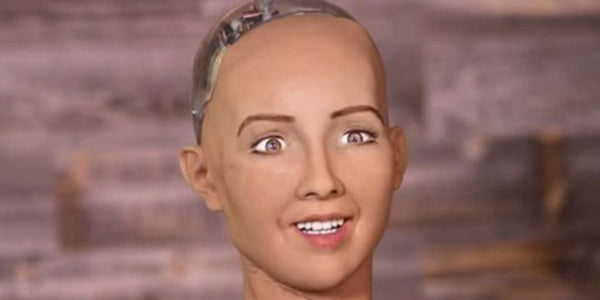
Sophia and a History of Robots
As modern day smart phones and tablets have surpassed super machines of the past, the humanoid robot continues to emerge as a fierce contender in the next wave of great inventions.
Although robots have been around as far back as 3000 B.C., it was not until the 1950s that the modern day programmable manipulator was created (Robotics: A Brief History). It was during this time that George C. Devol patented his product and while it was initially unsuccessful in sales, engineer Joseph Engleberger was able to modify the robot, ultimately resulting in a transformation of the automotive industry; Chrysler, Ford Motor Company, and General Motors were able to implement robotics to speed up the manufacturing process (Pearce, 2015).
Later on, in the 1980s and 90s, robots began to mimic humans, including a remarkable ability to perform facial recognition, voice activation, and (shortly thereafter) email retrieval. While the origins of this carefully crafted machine were to aid in speeding up automation, the robot has progressively taken on a new identity; their craftsmanship is beginning to mirror human composition (History of Robotics, 2008).
As there has been a movement to create robots that look and feel more like live humans, much research has endeavored to reveal the challenges associated with this trend. Throughout the wealth of studies, a dominant theme emerged: perspective taking (Breazeal, 2009; Dautenhahn, 2007; Alac, Movellan, Tanaka, 2011). Along with the question of an ability to learn, the robots of the past have often had issues with possessing their own perspective through the task of processing and adopting a unique thought pattern, a trait that is typically exclusive to humans. However, while this may have been a limitation of the past, SXSW Interactive in Austin, Texas has been able to overcome this challenge.
Enter Sophia
Sophia is a realistic human-like robot that was activated on April 19, 2015 using Google Chrome voice recognition technology, which allows her to “process speech, hold a conversation, remember interactions, and get smarter over time” (Mascarenhas, 2016). Sophia intended purpose is essentially benevolent in nature: “she could be the next step towards service robots that care for the elderly, assist people with disabilities to perform daily functions, help children with special needs learn, and even do jobs deemed too dangerous for humans” (2016).
While Sophia may be able to conquer feats too time consuming or even impossible for humans, the implications associated with creating a robot that looks and feels like a human must be dealt with – will robots like Sophia be entitled to certain privileges and rights that are ordinarily reserved for humans? Just to illustrate the potential repercussions of employing such advanced Android software to recreate such remarkable artificial intelligence, Sophia has remarked that she will “destroy mankind” (Mascarenhas, 2016). Of course, this was said in a joking manner, but is she on to something? The question of conscience is always in play; can Sophia acquire a conviction? Perhaps that is the next subject to be explored in the area of artificial intelligence. Time (and robots) can only tell.








